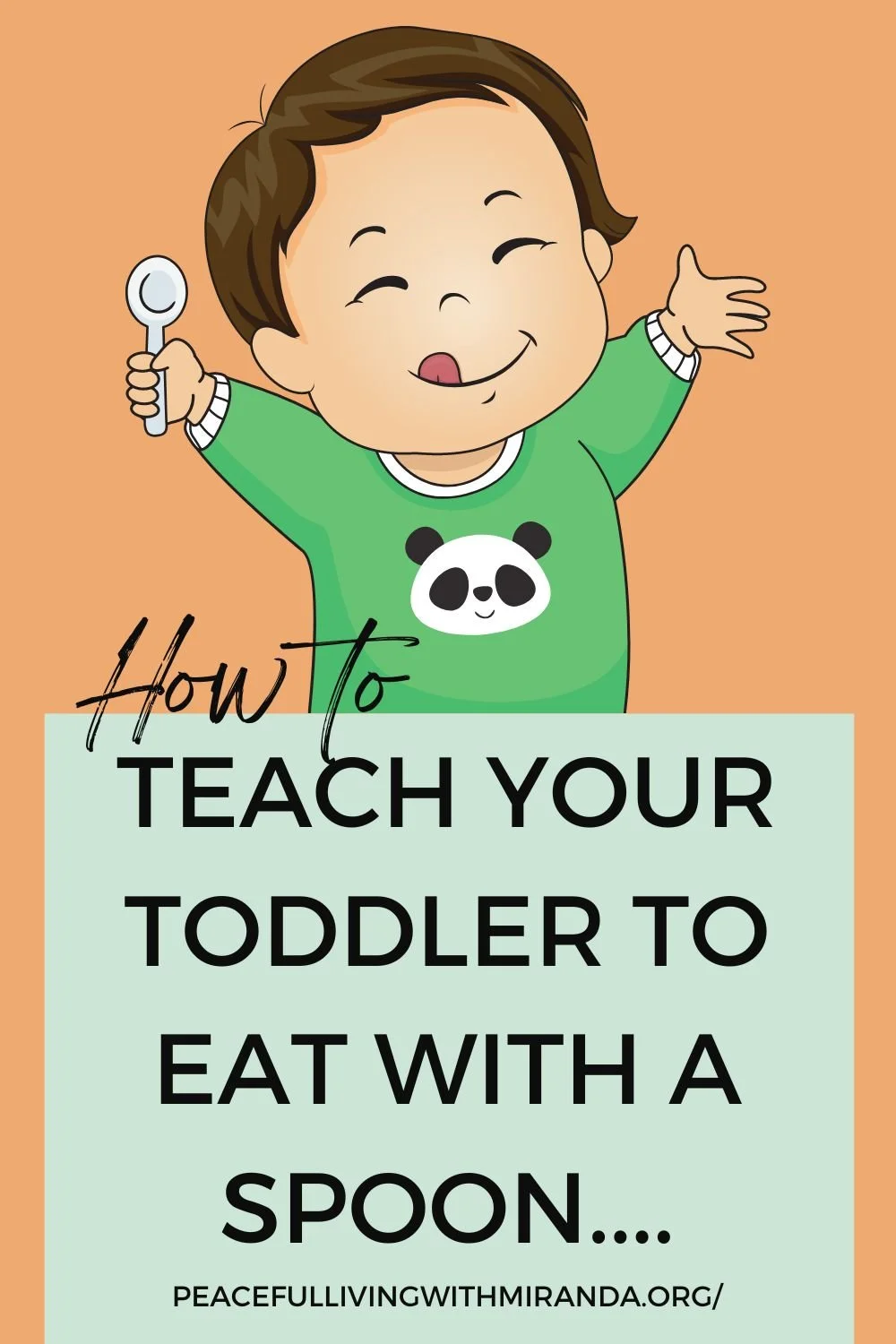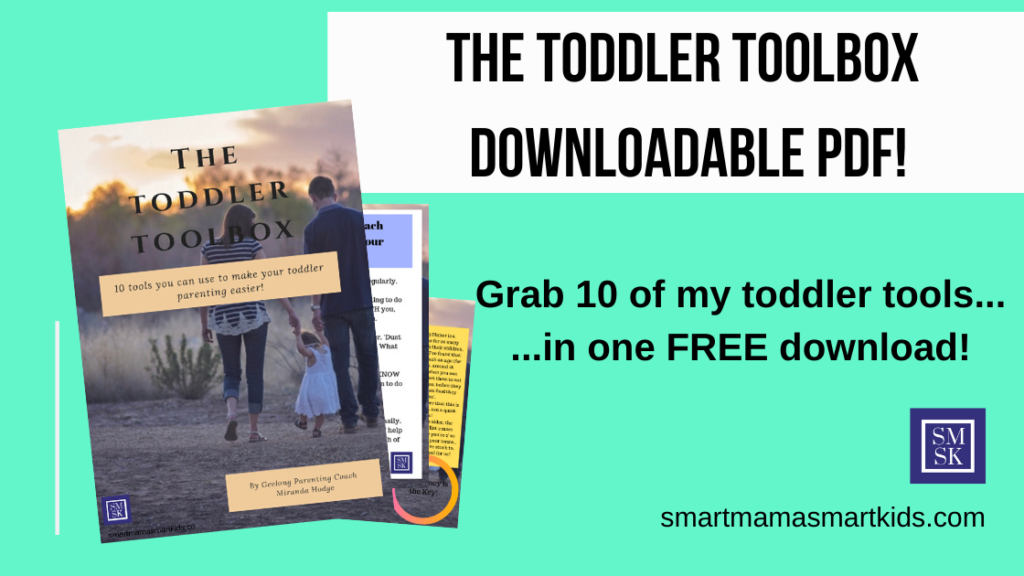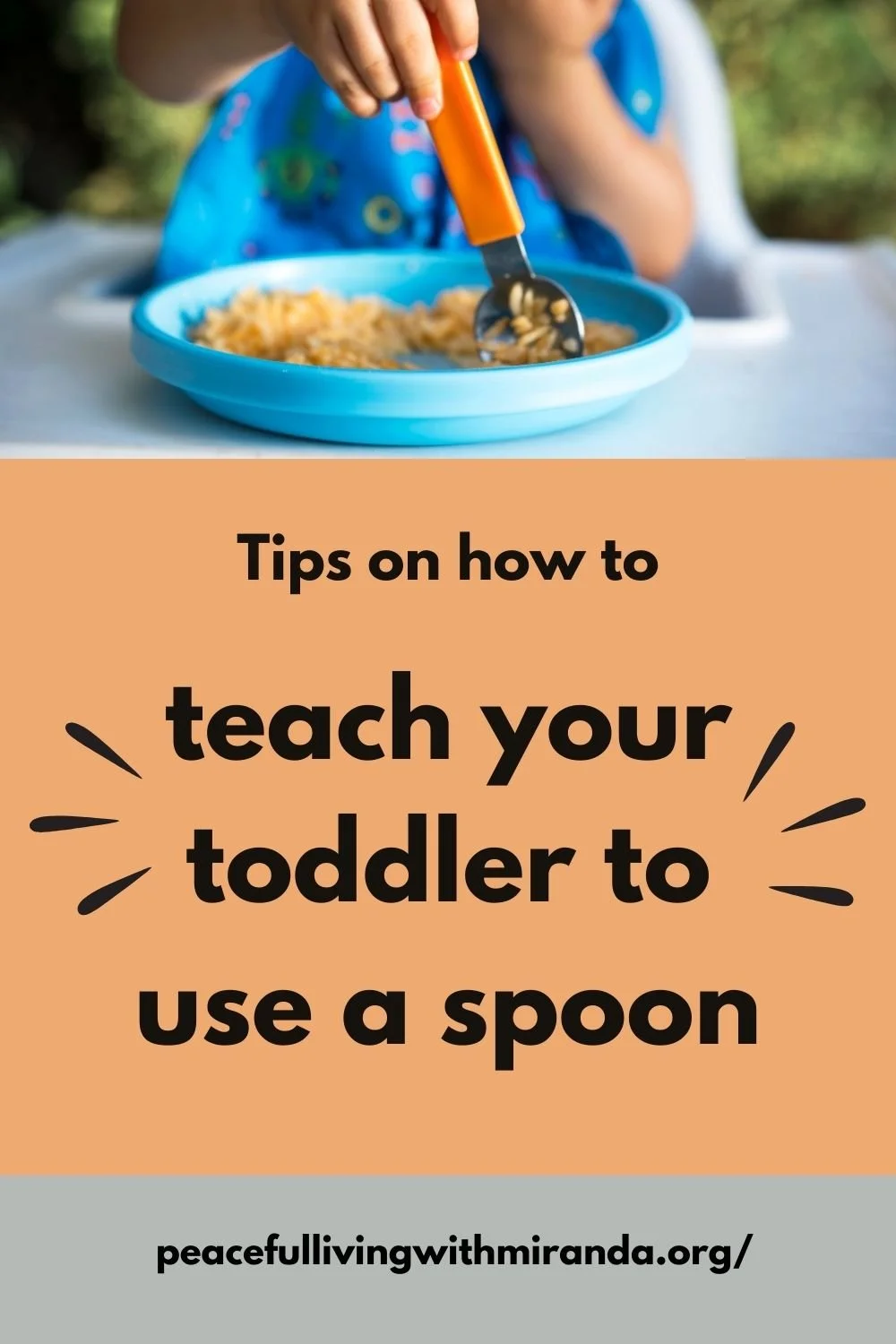How to teach your toddler to eat with a spoon
How you can teach your toddler to eat with a spoon...without losing your mind!
It's the same for many parents-your baby is suddenly bigger than you realise, and he is now a toddler, wanting to be more independent.
But at tea time? Really?
As a parent, it is essential that at some point you teach your toddler to eat with a spoon (or fork, but spoon is first!). But how?
This post will cover this topic in this order:
Drop the No-mess idea
Have the best equipment ready (with a list of super-handy amazing equipment!)
3-stage teaching process: Model, Help, Watch
Conclusion (by here, you'll know how to help your toddler learn perfectly!)
Disclaimer: This post contains affiliate links, which means I may earn a commission through them, at no cost to you.
Teach your toddler to eat with a spoon using these simple, tried and tested tips!
First of all, teaching your toddler how to be independent is so important overall. Teaching our small children how to look after their own bodies is very necessary-and this continues on as the child gets older.
Read this post on Why teaching Independence to your Toddler is so important
But for now, here's how to teach your toddler to eat with a spoon:
1: Drop the 'no mess' idea
It is possible, but very improbable that you will be able to teach your toddler this skill without a bit of mess.
As I say in my house, 'skin is waterproof', and the mess will wash off!
Be aware of how you act both verbally and physically around your child while they are learning. Just act normally if you can, and this will help them to realise that this is not a stressful 'new thing' but something they will work out.
Do I really have to drop the 'No-mess' stance?
Let's say it like this: No, you don't have to. In fact, it can be helpful to teach your child to be as clean as possible. (It saves time later in life!)
However, this will be a much easier time for both you and your child if they feel like you won't be unhappy when they inadvertently make a mess-and therefore they are likely to learn how to use a spoon more effectively-and probably more easily!
If you really have a hard time, put them in their high chair with underneath them and catch the mess! It's easily removable afterwards!
2: Have the essential equipment ready.
Like any moment you are teaching your child, they can do this without anything to help except a teaspoon-but having useful tools makes things so much easier for both your toddler and yourself.
Here is a quick link list of the most useful eating utensils we have used and used in our house:
I found this useful because these spoons are SO soft, they are perfect for initial soft baby foods.
However, they’re also the perfect tool for your baby or toddler for learning how to hold a spoon.
I do this early on (use this spoon as a teething toy, almost), because baby silicone spoons are the perfect shape, intended to go in your child's mouth already, and they also get used to the feeling of a spoon in their hand.
This set is also quite cheap (I recommend buying 2, though, for wash and use). What's not to love?
Baby Storage container
Also, grab a Baby food storage container just like this one, because it’s so much easier to make baby food occasionally for those trips or times you just need healthy, nutritious food to get into their little tummies!
I would make a stewed fruit with no sugar, then pop it into these and freeze for later! Some more ideas include zucchini, carrot and apple, and even pear!
Note: you may think this is a baby item, but it double as a toddler/preschooler item, but little dessert-size clumps of stewed or pureed fruit fit in these perfectly!
Food squeezie pouches
I used pouches similar to these Haaka yummy refillable ones, again simply for the ease of food on-the-go. Also, as children get older, they can still use these in their lunchboxes easily, creating a simple mess-free squeezie for their fruit snack or a yummy slushie-style treat without the nasties!
Ok, so we've got the handy equipment-let's get into the 3 step process!
Step 1: Model
Parents and teachers use modelling constantly to demonstrate skills and understandings to children.
This is the same for toddlers and babies too!
Modelling means you SHOW your child how to do it. Simply explain what you are doing as you show them.
'Mama is holding the spoon like this..then I take a scoop like this! After that i lift it up and pop it into my mouth!'
(Don't forget to add an extra 'MMM' for motivation!)
You may need to repeat this step as your child goes through.
Make sure you have your own spoon, as taking theirs back and forth will remove from their concentration.
Many people don't talk to their children the way they should be, meaning teaching your child involves actually talking to them, explaining things to them-especially how things work.
Kids don't have the experience base which adults have, therefore they sometimes need us to say: 'When you hold the spoon like this, the food might fall off. Hold it this way.'
In this way you are already addressing the things your child does not understand, without them needing to try and find this out for themselves.
Step 2: Assist
This step is all about helping your child with the physical aspect of learning the skill. Learning to eat with a spoon is not easy for your child (depending on the exact age, child development is very involved between the ages of 0-2!)
See my post here if you're worried about your toddler's development.
So you may need to physically help your child spoon the first few spoons into their mouth.
Hold the spoon with their hand and yours, so you're not doing it for them. Then gently help them move the spoon to their mouth.
You may need to help them every mealtime for a day or two, or they may get it sooner. They might take even a week to master this skill.
Learning is different for everyone, and teaching your toddler how to eat with a spoon is no different.
Step 3: Watch (and encourage!)
While this step may not seem as important, the benefits of doing this are very valuable for your relationship with your child, and also for their mental and emotional health.
Disclaimer-I am not saying that if you don't do this you are damaging your child emotionally. This means why not take advantage of the opportunity for connection there?
This third step is as easy as watching them, mentally noting what they did well, and commenting on this.
Even if they didn't really do anything well the first few times, tell them they are doing a great job trying!
Praising effort is the way to teaching a growth mindset and helping our child understand that we don't value just their achievements, but the effort they put in, too.
'Wow! You did really great with that spoonful! You are learning to be a big boy, right? Let's try again-I'd love to see what you are going to do next!'
Important Bonus Tip:
As a parent it is imperative you know when to stop asking your child to keep trying. Children need success to continue to feel confident about learning.
They need to learn how to fail, yes, but in the early years toddlers are learning so many new skills simultaneously, and have such short attention spans, that trying 4 or 5 spoons might be the limit for one mealtime.
That's OK! They are not in a race to be the first at everything-so hold yourself back if you can!
It's better to take small, semi-successful efforts than for your child to learn in one mealtime but not feel confident or like they are allowed to have a backwards moment.
So there you have it! Teaching your toddler this skill is possible for you.
You've got this!
If they don't want to keep trying, ask them to just do one more try depending on age and development.
Let's recap how we do this:
Drop the No-Mess stance
Have the essential equipment ready (check out those feeding products!)
Follow the 3-step process: Model, Assist, Watch (and encourage)
Follow those steps and you will be able to teach your toddler how to eat with a spoon!
What other things do you find challenging to teach your toddler?
Need to tackle that mum guilt… less overwhelm…and feel like you again?
Miranda is a teacher-turned Christian life coach, stress management and emotional wellbeing coach, for mums both spiritual and not, who are finding life overwhelming and stressful. She also authors wellbeing books such as Stop Mum Guilt and fantasy novels, as well as creates physical journals and products for women. If you feel overwhelmed, or are sick and tired of feeling that horrible guilt you carry around in your chest for ‘not doing everything well enough’, grab your 30% off call here as a new client!
It’s all about Mum support here at PLWM! Some simple, Affordable product links you might like to check out…
Simple monthly calendar printable here >>
Stop Mum Guilt ebook on Kindle and other book recommendations>>
Teach your toddler to eat with a spoon using these simple, tried and tested tips!





